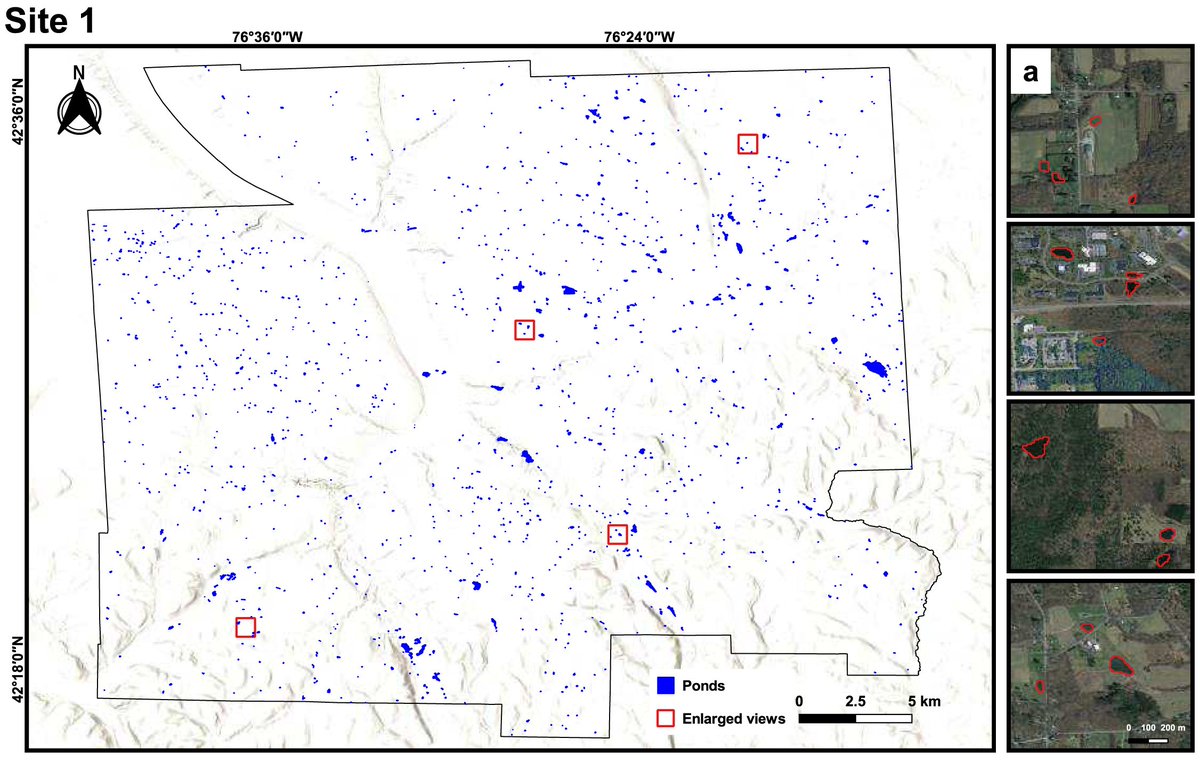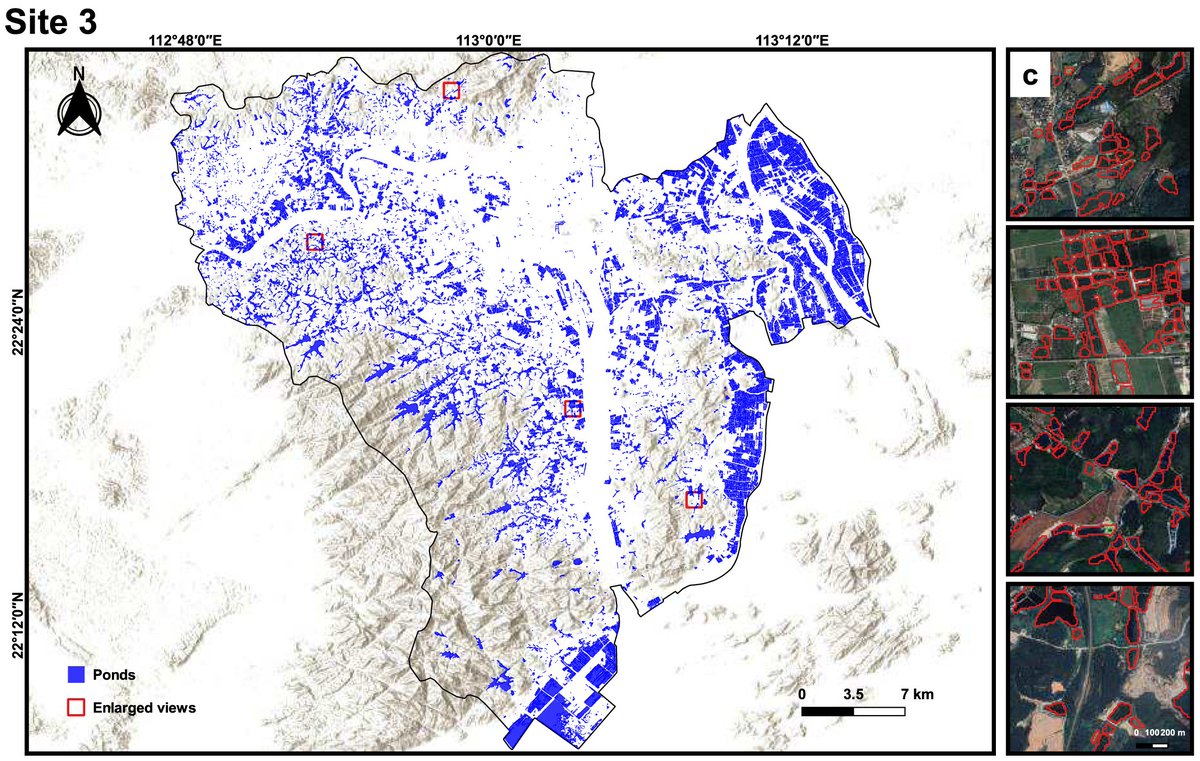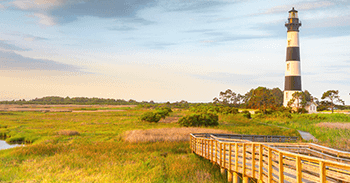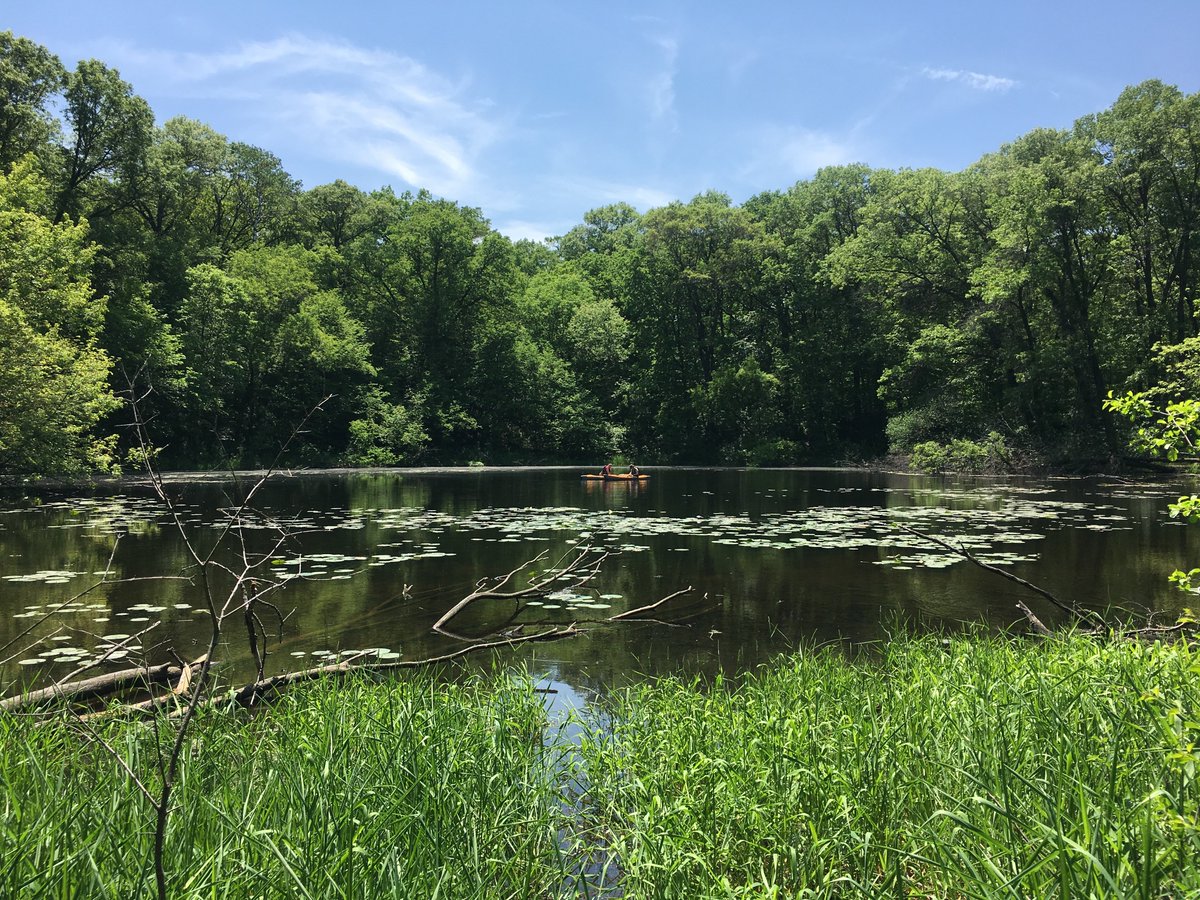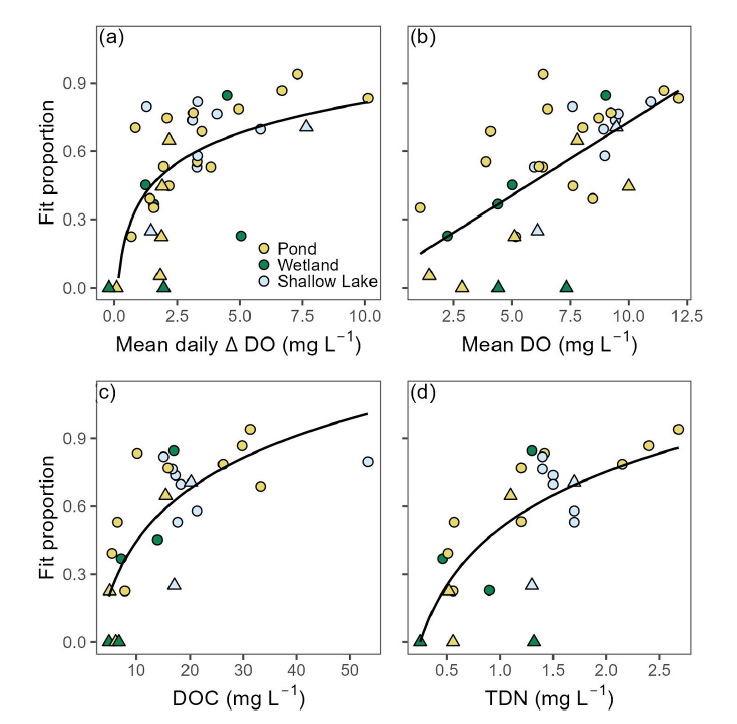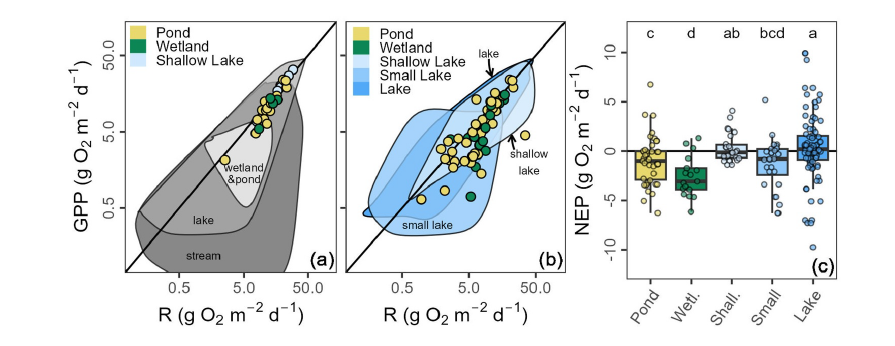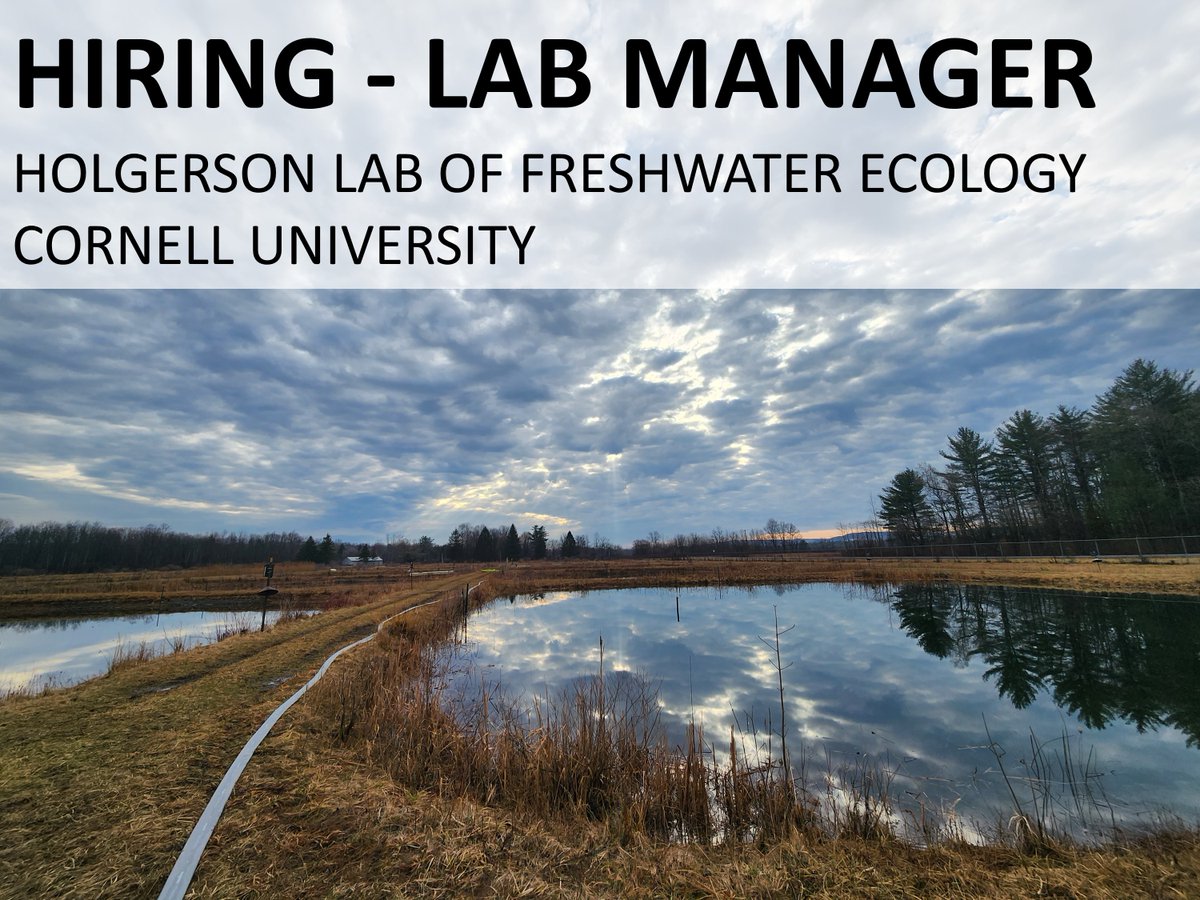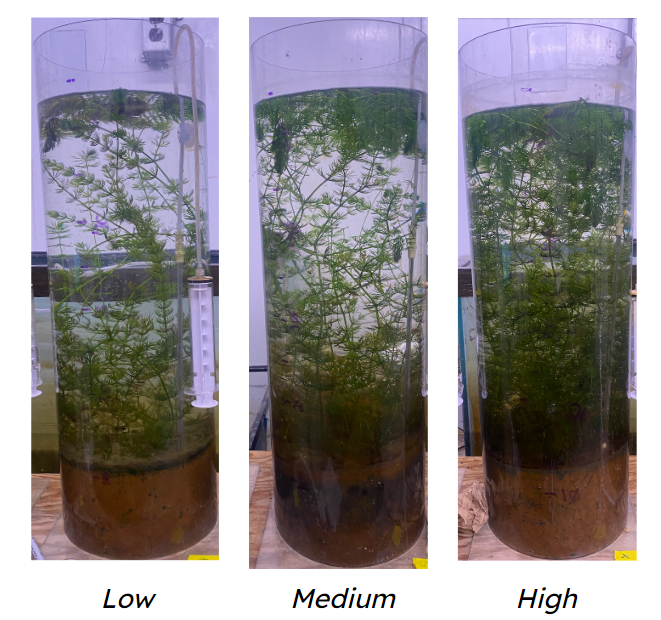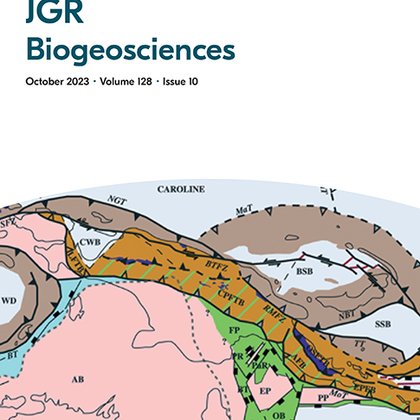
Meredith Holgerson
@pondscience
Followers
2K
Following
3K
Media
69
Statuses
1K
Asst. prof @CornellEEB | Freshwater scientist | ponds, ecology, biogeochemistry, carbon, food webs, conservation | mom in science | she/her
Joined January 2017
New pub alert #AGUPubs! Small, shallow waterbodies are among the most productive freshwater ecosystems on the planet! In this @GLEONetwork #ponding collaboration, we examined ecosystem metabolism in 26 shallow waterbodies in N. America and Europe. (1/4).
agupubs.onlinelibrary.wiley.com
Shallow and small waterbodies have high but variable rates of gross primary production and respiration Depth plays a large role in metabolism rates Shallow waterbodies are some of the most produ...
3
26
54
RT @aslo_org: 🌟🏆🌟 Each year, #ASLO proudly honors our Fellows and Sustaining Fellows for their incredible contributions to #aquaticscience!….
0
11
0
I'm so excited to share some of our new work mapping ponds! PhD student Denghong's remote sensing skills are enviable :) Now he's working on mapping ponds throughout NYS. Stay tuned!.
New scalable method to accurately detect small (yet important) water bodies down to 0.1ha with spectral-temporal-spatial features of Sentinel-1/2 data. Check out our fresh #RSE paper with @SheelBansal @pondscience and Xiaolin Zhu's lab at HK PolyU.
1
6
38
RT @AJ_Heathcote: Do you have results related to lake mixing to share at the @aslo_org Aquatic Sciences Meeting? Join @pondscience @mindym1….
aslo.org
The theme of the 2023 Aquatic sciences Meeting is Resilience and Recovery in Aquatic Systems. We encourage submissions that examine these topics and invite you to contribute special sessions on...
0
3
0
@GLEONetwork Our study provides more evidence that ponds are truly biogeochemical hotspots! This work was such a fun collaboration years in the making. @JoeRabaey @DRichardsonLab @jbcotner @EvoEcoEric and many more not on here!.(4/4)
0
1
9
@GLEONetwork We also explored how well metabolism models (designed for bigger, deeper lakes) work for ponds. Metabolism models work best in sites that are more productive and have bigger diel oxygen swings. Models performed poorly in less productive / more heterotrophic systems (3/4)
0
1
3
@GLEONetwork We observed high rates of GPP (mean 8.4 g O2 m-3 d-1) and R (mean 9.1 g O2 m-3 d-1), while NEP varied from net heterotrophic to autotrophic. Metabolism rates were affected by depth and plant cover; the shallowest waterbodies had the highest GPP, R, and most variable NEP. (2/4)
0
1
2
RT @Minabizic: 🌊 Call for Papers! 📝 Special Issue of Limnology & Oceanography Letters #ASLO_Letters . 🌎𝐌𝐞𝐭𝐡𝐚𝐧𝐞 in Freshwater, Brackish and….
0
25
0
RT @PondGator: 🚨New pub alert!🗞️Check out our work in @JBiogeochem comparing net denitrification (N-removal) vs. net N-fixation (N-addition….
0
11
0
RT @JGRBiogeo: 🍂 What Leaves Leave When Leaves Leave Trees? 🤔 . While this may sound like the title of a Dr. Seuss book, it’s one of our ne….
0
9
0
#ASLO24 - We welcome your abstract submissions for our special session on the role of macrophytes in aquatic biogeochemical cycles! Hope to see you in Madison this June.
1
7
26
This looks like a great read. Climate warming --> browning of northern terrestrial food webs (and it appears to be new C, not old!). Use of museum specimens and experiments. Congrats on the study, @pmanlick!.
0
3
11
We’re excited to share our recent paper examining how the density of a submersed macrophyte (Ceratophyllum demersum) controls aquatic greenhouse gases! This work was developed and led by my grad student, Meredith Theus. (1/4).
agupubs.onlinelibrary.wiley.com
In systems dominated by non-rooting plants, plants may have a larger effect on water column CO2 and CH4 dynamics than on greenhouse gas production in the sediment High density stands of a submers...
5
17
69



